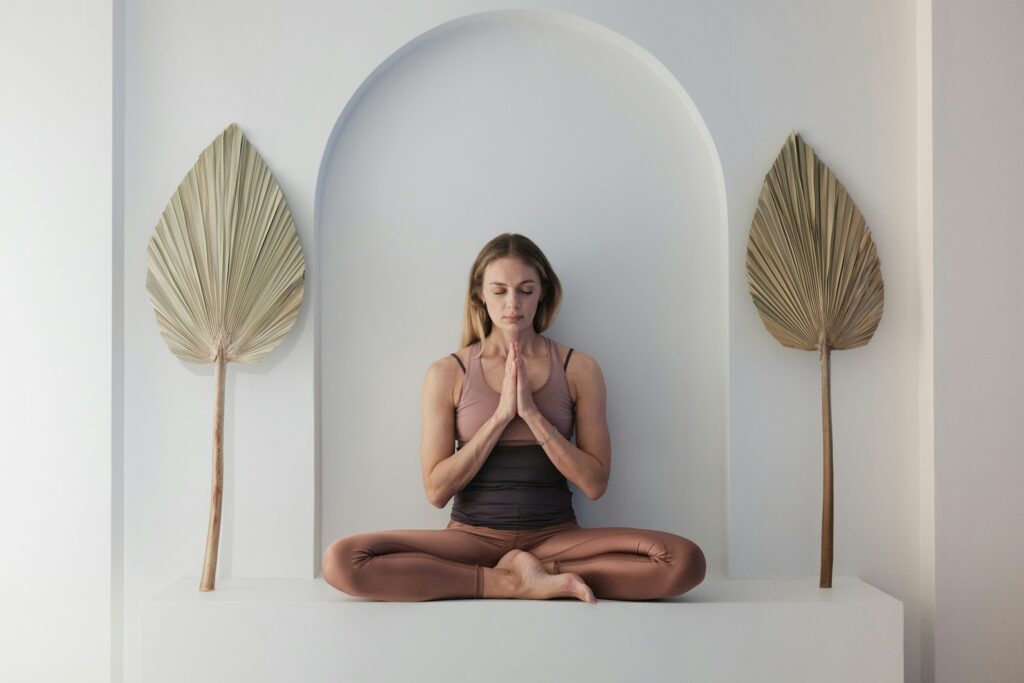When anxiety hits, your body isn’t just being dramatic—it’s responding to something it sees as unsafe.

And while plenty of advice floats around about how to “calm down,” not all of it works when your chest is tight and your thoughts are racing. You don’t need lectures or forced positivity. You need tools that meet you where you are—ones that help you feel a little more grounded, a little more safe, and a lot more human. These coping mechanisms aren’t about eliminating anxiety completely—they’re about finding ways to move through it with more ease and self-trust.
1. Label what’s happening without trying to fix it.

Sometimes the most helpful thing is just saying, “I feel anxious right now,” without rushing to make it go away. Naming it turns the storm into something you can observe, instead of something that owns you. That doesn’t mean giving in to it—it means giving yourself space. When you stop fighting your anxiety like it’s an enemy, your nervous system often starts to settle on its own.
2. Focus on micro-control when the big stuff feels out of reach.

You might not be able to solve the thing you’re worried about, but you can change your socks. Or tidy one corner of the room. Or drink a glass of water. Tiny actions give your brain something tangible to work with when your thoughts feel scattered. It’s not about productivity—it’s about giving your body the signal that something is being handled, even in a small way. That can be enough to change your state.
3. Move your body in a way that matches the feeling.

Instead of trying to stretch or meditate when you’re full of nervous energy, try moving with the anxiety first. Shake out your arms. Dance. Walk fast. Let your body match the storm for a minute so it doesn’t have to store it all inside. After you’ve released some of the adrenaline, the calmer practices land more easily. However, you can’t jump straight to zen if your body still thinks it’s in danger.
4. Let your senses do some of the heavy lifting.

Sensory grounding is more than a wellness trend; it’s a direct line to your nervous system. Cold water on your hands, holding ice, wrapping up in a heavy blanket, sniffing something minty or citrusy—it all sends your body messages that you’re here, you’re real, you’re okay. These tools work best when you build them into your environment before panic sets in. Think of it like a sensory first-aid kit for the hard days.
5. Talk to yourself like you would a close friend.

When you’re anxious, your inner voice can get harsh fast. “What’s wrong with you?” “Why can’t you just calm down?” That criticism only fuels the panic. What you need is softness, not strategy. Try talking to yourself the way you’d talk to a scared child or your favourite person in the world. “You’re not doing anything wrong. This is hard, but you’re safe right now.” It makes a bigger difference than you think.
6. Interrupt the spiral with something slightly absurd.

Humour, novelty, even silliness can interrupt anxious patterns. Watch a weirdly specific YouTube video. Sing badly on purpose. Recite the most dramatic line from a soap opera. It sounds ridiculous, but your brain thrives on unexpected input when it’s looping hard. It’s not about pretending the anxiety isn’t there—it’s about giving your system a tiny jolt that says: “Hey, we’re allowed to shift gears now.”
7. Write without a filter for two straight minutes.

When your mind is swirling, your thoughts need somewhere to go. Grab a notebook (or your notes app) and let everything spill out. No punctuation rules, no censorship. Just raw, messy release. Don’t worry about solving anything. Just get the noise out of your head and onto something else. Often, it’s the holding in, not the feeling itself, that makes anxiety spike.
8. Focus on your feet or hands—they bring you back to your body.

When your thoughts are racing ahead, focusing on your extremities can help you return to now. Wiggle your toes. Clench and release your fists. Rub lotion into your hands slowly, like you actually mean it.It seems small, but it works. It’s a quiet reminder that you exist in a body—not just a head full of what-ifs.
9. Do something repetitive with your hands.

Your hands are an underrated anxiety tool. Things like knitting, doodling, folding clothes, or even organising a drawer can be deeply regulating. Repetition signals safety to your brain—it says, “We’re not in crisis, we’re just doing a task.” When your hands are occupied, your thoughts often slow down, too. It’s not distraction—it’s recalibration.
10. Set a “worry window” and put your anxiety on hold.

If you’re overwhelmed by the same thought on loop, try this: give yourself a specific time to worry about it later. “I’ll think about this at 5pm.” Then, when it creeps in, remind yourself it’s not the time yet. This helps you reclaim your day, even if the anxiety doesn’t vanish. You’re not ignoring it—you’re putting it in a container. That sense of control can be incredibly grounding.
11. Let someone know you’re spiralling, even if there’s no solution.

You don’t have to vent in paragraphs. Sometimes it’s enough to text a friend and say, “Hey, I’m spiralling a bit, just needed to say it out loud.” Naming it in connection diffuses some of its charge. There’s something powerful about not being alone in it—even if no one fixes it. Sometimes anxiety just needs to be witnessed, not solved.
12. Reassure your brain with safe, boring truths.

Repeat calm facts to yourself: “I’m in my room.” “Nothing urgent is happening right now.” “This feeling won’t last.” Grounding in reality, even if it’s dull, helps calm a brain that’s sprinting toward imagined disasters. Safe truths can be your anchor. They don’t need to be profound—they just need to be real and steady, something anxiety can’t twist.
13. Let the anxiety move instead of locking it in.

Sometimes anxiety spikes because you’re trying too hard to contain it. You clench, hold your breath, push it down. But feelings are meant to move. Cry if you need to. Scream into a pillow. Pace the hallway. Shake your arms. Let it pass through instead of trapping it inside. It’s not weakness—it’s wisdom. Your body already knows how to release emotion. Give it permission, and the relief might surprise you.


